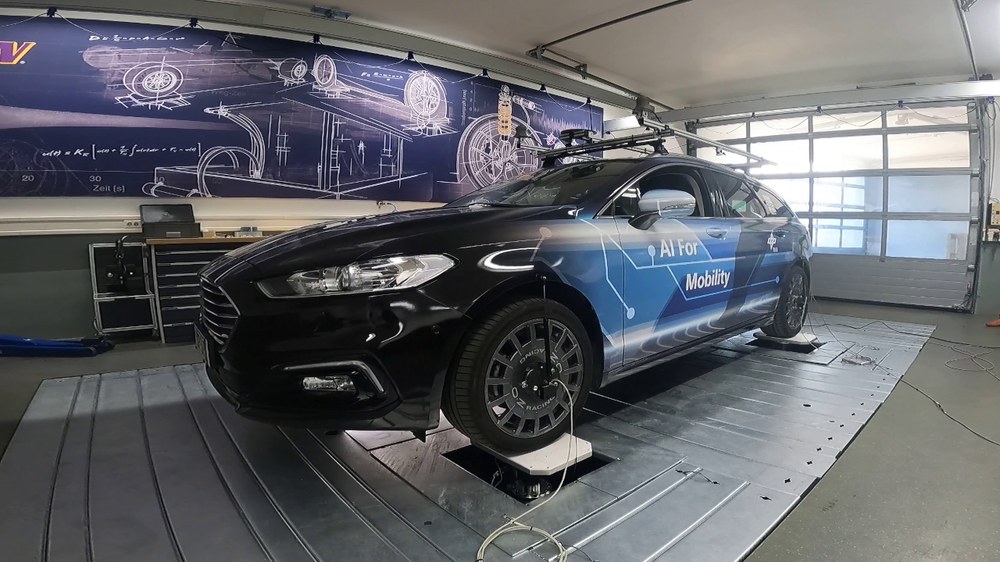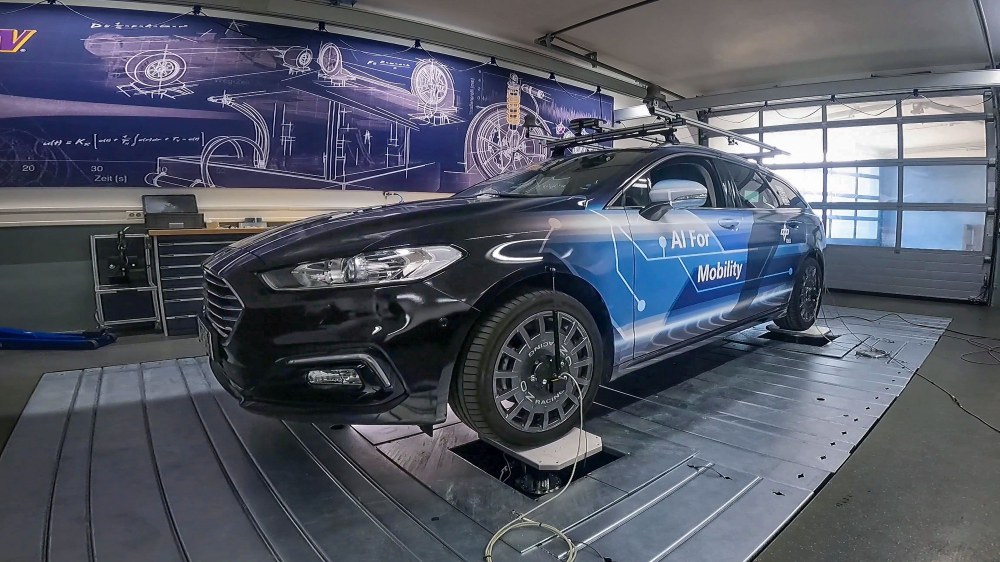Extensive experiments were carried out to characterise the vertical dynamics of the AFM. In collaboration with our partner KW automotive GmbH, which is funded as part of the KIFAHR project, the vehicle was equipped with various sensors before being subjected to defined vertical excitations on a four-post test rig. This setup makes it possible to measure and analyse the vehicle dynamics with predefined post height profiles. The tests carried out included harmonic and road-like excitations. Sinusoidal excitations with increasing frequency were used to estimate the transfer function of characteristic vehicle states. Chassis acceleration and wheel loads are of great interest as they can be used to quantify ride comfort and safety. To further support the modelling process, many different variables were recorded on the test bench. Not only the accelerations of the wheels, the chassis and the engine, but also the deflections of the components are of interest and are measured with potentiometers. If the actuator currents of the semi-active dampers, the positions, speeds and accelerations of the four posts, the dynamic wheel loads and additional auxiliary variables are added, more than 50 signals had to be processed. The large number of measurement channels required recording on two different devices. For the subsequent synchronisation of the recordings, a specific signal was recorded on both devices and then used to calculate the delay and compensate for the different time bases of the measurements.

AFM Experiments on a Vertical Dynamics Test Rig for AI-based Control Algorithms
Your consent to the storage of data ('cookies') is required for the playback of this video on Youtube.com. You can view and change your current data storage settings at any time under privacy.
The limits of the suspension were systematically tested in almost 100 separate experiments with sinusoidal oscillations with different amplitudes, roll and pitch excitations and realistic road profiles. Two applications were developed for ad hoc analysis, which make it possible to visualise the measurement data in the time domain and to estimate the transfer functions for any input-output combinations.
The KIFAHR project is funded by the German Federal Ministry of Education and Research under contract 01IS20010A.
Further information can be found here.

